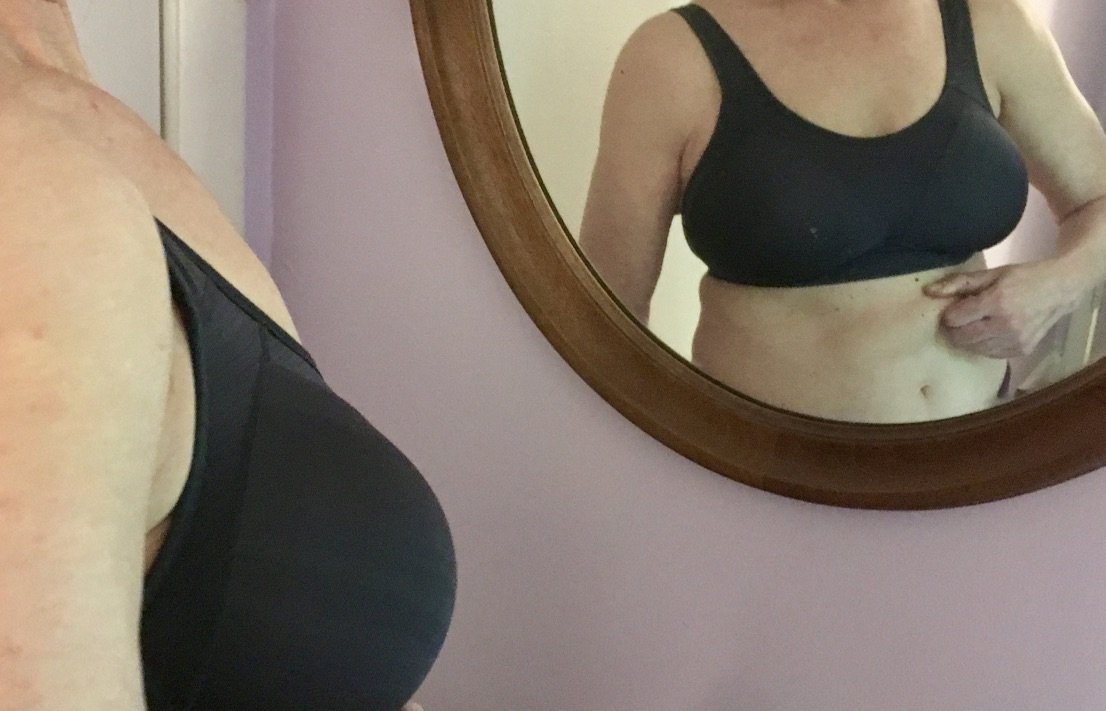In Pursuit of Lasting Change
After reading “The End of Alzheimer’s,” by Dale Breseden, MD, my husband and I decided to change our diet to the recommended Ketoflex 12/3. (A must read if you’re having more frequent senior moments!) In addition to being better for our brain health as we age, we thought this diet may help us drop the extra weight.
For years I have tried to lose that last, stubborn 10 pounds, for many reasons. I want to feel freer and stronger in my yoga practice and Aikido; I want to look and feel healthier; and I feel that to be taken seriously as a fitness expert, my body must be lean with about 20 percent body fat.
Have you ever had a habit that you found difficult to change? Even when you are highly motivated? Emotional eating, toxic relationships, or smoking? I swear it took me 10 years to quit smoking! And I have carried this extra adipose tissue twice that long! I know this is an obstacle to to my own self actualization.
In The Yoga Sutras of Patanjali 1.30, one of the obstacles to self actualization, or enlightenment, is “failure to reach firm ground and slipping from the ground gained,” or, as I interpret it, failure to make new habits stick. Experts say it takes anywhere from three weeks to eight months to create a new behavioral habit. The behavior may change, yes, but the underlying beliefs or source of that behavior may not.
What is the source of the negative behavior, anyway? The source is found by listening to our internal dialog. The subconscious mind believes whatever you tell it. If what you tell yourself, your internal dialog, isn’t in synch with your new behaviors, the new habit will never become “firm ground.” If I think consciously that I want to be svelt, but I still believe my bullying brother when he called me a “fat slob,” I will never be able to realize my new habit.
In Sanskrit, habits are called samskara (Yoga Sutra 2.15). Mental and physical habits are recognized as well-worn neural connections in the brain. Looking at my past feeling towards my body, I realized my habitual negative self talk about my body is what holds me back from positive change. Motivated action was always there, but was defeated by my own thinking. Both the external and the internal must be addressed for real, lasting change.
As I contemplated this, I knew I could be kinder to myself: praise my magnificent, gracefully aging body, and set an intention that counters negative self criticism with its opposite. While embodying the positive, I bring in the old, negative “fat slob” criticism, letting the positive thought dominate. With time and repetition, it will become the new, well worn connection in my brain, and I will act in accordance with the new belief. (Yoga Sutra 2.33)
Try these tips to make a lasting change:
Work on only one change at a time, tackling both the internal (thoughts) and external (behaviors) simultaneously.
Set an intention: a simple, positive, present-tense statement, as if it has already come to be e.g., I weigh 120 pounds or I am free of cigarettes.
Identify any negative internal dialog surrounding this issue, in meditation or contemplation, if possible. (Be kind to yourself; this may be painful!)
Devise and use positive statements to counter the negative thought.
Enlist the help of your family and friends, The Universe (God), or a professional, if you feel stuck.
Be kind to yourself if you revert; get back on the plan ASAP.
Yoga is a lifestyle practice designed to promote deep physical and psychological change. Learning to listen to our inner dialog through the practice of yoga asana, pranayama, and meditation, is just one of the techniques I use in my private offering: Yoga Basics.
Contact me for more information.
*Disclaimer: I present the yogic philosophical version of how to change. I am not a medical doctor or psychologist. These are suggestions only; I do not attempt to cure any illness or condition.


